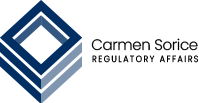Food Contact Materials (FCM) play a crucial role in food safety. A well-designed analytical plan for FCM not only ensures compliance with current regulations, but also that consumers receive safe and quality products.
But how to build a robust and reliable analytical plan?
Understanding the Regulatory Context: Understanding the regulatory context is fundamental. General legislation and, where applicable, specific provisions for individual materials clearly outline requirements for FCM. Be updated on these regulations is the first step towards compliance.
Define the Objectives of the Analytical Plan: The analytical plan should have clear and defined objectives. This means identifying which substances should be tested, evaluating migration limits, compositional requirements, NIAS (Not Intentionally Added Substances), and more. The objectives should reflect not only legislative compliance, but also the Company’s quality standards.
Select Appropriate Tests: The selection of tests depends on the type of FCM and the intended use. It is essential to choose internationally validated and recognised analytical methodologies capable of detecting substances at levels relevant to human health and safety.
Collaborating with Reliable Laboratories: The results of the analytical tests are as valid as the accuracy of the tests performed. Partnering with trusted laboratories ensures that results are accurate and provide reliable data on which to base decisions.
Accurate and Up-to-date Documentation: Detailed documentation is essential to demonstrate compliance in the event of inspections by the Competent Authority. The plan should be updated regularly to reflect changes in legislation, industrial practices and the raw materials used.
An effective analytical plan not only helps to navigate the complex regulatory landscape, but also to build consumer confidence in food: Companies can develop a plan that not only ensures compliance, but also promote the safety and quality of your brand.



